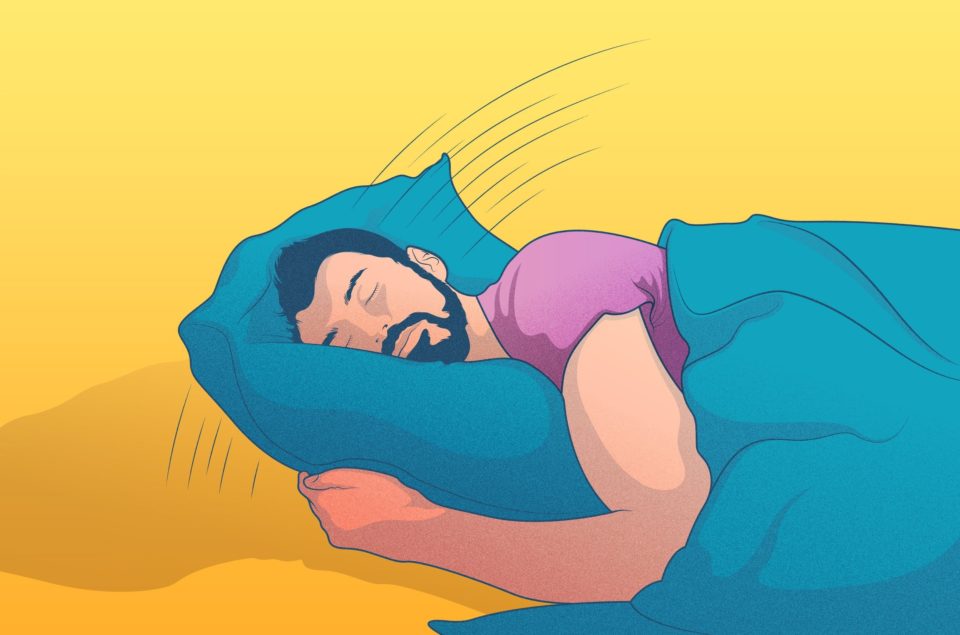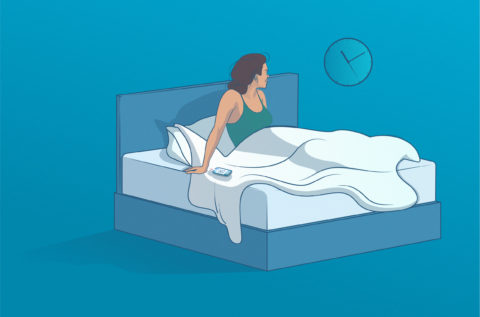Meditation is an ancient practice allowing us to better connect with our minds and bodies. At its core, meditation gives you methods to train your attention and achieve a heightened sense of awareness. It’s also used to help relax and calm your mind and body.
While mindfulness has become a popular form of meditation, sleep meditation is also gaining traction for its perceived positive impact on sleep quality and helping the onset of sleep.
Sleep meditation can be described as a version of mindfulness with the direct purpose of priming the body for sleep. It is usually practiced in bed before going to sleep. Join us as we explore the most popular forms of sleep meditation techniques available and their impact.
Try Sleep Cycle’s guided sleep meditation for free
The impact of meditation on sleep, mind and body
In a clinical trial seeking to study the effectiveness of meditation for sleep disturbed populations, the results indicated that meditation significantly improved sleep quality in a variety of clinical populations with sleep disturbance. Another study found that combining Cognitive Behavioural Therapy (CBT) and mindfulness was a superior approach compared to that only conventional CBT in improving sleep. However, if you’re undergoing treatment or seeking help for a sleeping condition, bear in mind that sleep meditation should not be considered as an alternative to sleep therapy, but rather as a complement to any existing treatment.
Nevertheless, even if you don’t suffer from a sleep disorder, you will stand to gain by incorporating a calming meditation routine at bedtime:
- Decluttering – training yourself to focus on the present can help enhance levels of concentration and the ability to process new information. Focusing on the present can also help compartmentalize stray thoughts and fretting about tasks left undone in the day, which can tend to delay the onset of sleep.
- Reducing stress – A physical impact of meditation is that over time, your body produces lower cortisol levels – the hormone that triggers the body’s stress response. As your ability to control stress improves, it will help the onset of sleep as your mind will be less prone to dwell on stressors.
- Addressing anxiety – Meditation targets multiple emotional processes that can contribute to poor sleep quality with a study concluding that brief meditation improves emotion processing. Additionally, Progressive Muscle Relaxation (PMR) – a form of relaxation often practiced in sleep meditation – targets the symptom of tension associated with anxiety.
- Detoxing – like yoga, breathing in meditation also has a place in rejuvenating a sluggish lymphatic system. Further benefits of consistent meditation are that the heart rate and breathing slow down, whilst blood pressure normalizes – all of which are conducive to higher sleep quality.
Who can practice sleep meditation?
Meditation is generally acknowledged to be suitable for most people as it is a low-impact and low-risk activity. Sleep meditation has the added benefit that almost anyone at any age can practice it. For example, sleep stories, a sleep meditation technique, are popular with both children and adults.
Furthermore, certain working groups whose sleep is heavily disturbed will experience a more direct benefit from practicing consistent sleep meditation, such as shift workers and frequent fliers. This is because the body will respond to the sleep meditation cue in the same way in spite of changes in location and hour of sleep.
Top sleep meditation techniques
Sleep meditation can vary in length and last as long or as little as you need. You can choose to practice sleep meditation by yourself or by using an audio guide, such as listening to a recording, a guide to breathing and visualization, or a sleep story.
- Breathing – this is one of the key pillars of meditation and forms the basis of most meditation practices. Box breathing for example where you breathe in, hold your breath and breathe out – all at the count of four – is particularly helpful to relieve anxiety. Many of the sleep meditation audio guides will often contain sections that are focused entirely on breathing.
- Visualization – is a meditation method in its own right. However, it can effectively be incorporated into your sleep meditation practice. It’s a way to guide your mind by focusing on for example imagery or colors that you associate with your mood. Visualizing a safe or ‘happy place’ will help let your guard down, indicating to your mind and body that it is safe to sleep in the calming environment you’ve created.
- Body awareness – this technique focuses on quietly scanning the body, concentrating on the thoughts and sensations emitted from each part of the body. This can also effectively be combined with Progressive Muscle Relaxation (PMR), a technique commonly employed in sleep meditation. The exercise involves tensing and releasing muscles, progressing throughout the body, with the focus on the release of the muscle as the relaxation phase.
- Stories and sounds – there is an ever-growing range of content consisting of stories, sounds, and music to help people fall asleep. These are packaged into apps, podcasts, audio guides, and so on. For many, sleep stories and sleep sounds are their first introduction to sleep meditation.
- Gratefulness – also referred to as compassion meditation, helps you to focus on positive and loving aspects of your life and what you may be grateful for. Practicing gratefulness as part of your sleep meditation routine can help set you up for better sleep, concentrating on keeping grievances or negativity at bay.
Sleep environment & sleep hygiene
To allow yourself the best chances of getting your sleep meditation practice off to a flying start, assess your sleep environment:
- Keep your bedroom clutter-free and clearly separate it from your workspace.
- Keeping the temperature cool, bed linen crisp and nightwear light and airy are all helpful ways to facilitate better sleep.
- Journaling to keep track of the impact meditation has on your sleep is also worthwhile.
- Pairing sleep meditation with best practices in sleep hygiene, such as sticking to a regular bedtime and wake-up time, will prove a powerful combination in the pursuit of better sleep.
Like other meditation forms, there are countless ways to practice sleep meditation, the key is to find a method that works for you. For sleep meditation to be effective over time, it’s important to treat it not as another task that needs to get done before bedtime, but rather as part of your bedtime routine and letting it become the first relaxing stage of a good night’s sleep!









